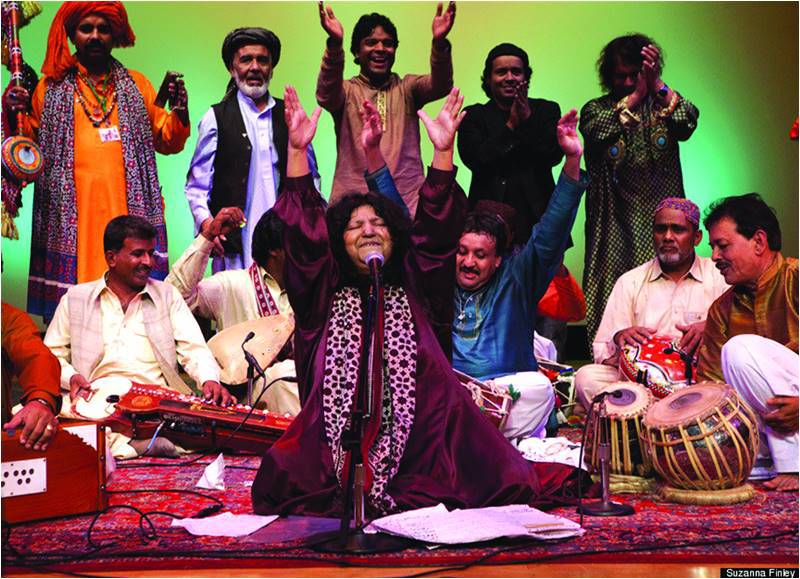
Raza Habib Raja: First of all, congratulations on the publishing of your latest book on Sufism, titled Soul Rivals: State, Militant and Pop Sufism in Pakistan. You begin your book by giving an example of an academic paper where the authors suggested that Pakistan should promote Sufism to improve its international image. Why do you think Sufism has attained this kind of a“pacifist” appeal in some Western as well as some domestic circles? For example, you have also mentioned that for some Sufism equates to singing Qawwalis at shrines. Is this overly romanticized image of Sufism due to its own “nature” or because of the way it contrasts with some other sects?
Nadeem Farooq Paracha: First of all, Sufism is not a sect itself. I make that perfectly clear in my book. Fact is, there is no one kind of Sufism. However, in more general terms or in a nutshell, it has often been described as the esoteric strand of Islam. This is not to suggest that it isn’t. But even as an esoteric concept, it has numerous variations.
There is no single, core nature of Sufism, as such. When the West came into contact with the East, especially when European imperialism was ascending,its imperial vessels were rather amused by, let’s say, the more exotic traits and customs of so-called eastern cultures.
Especially those that seemed syncretic in nature. These included various forms of Hinduism, Buddhism and Sufism.
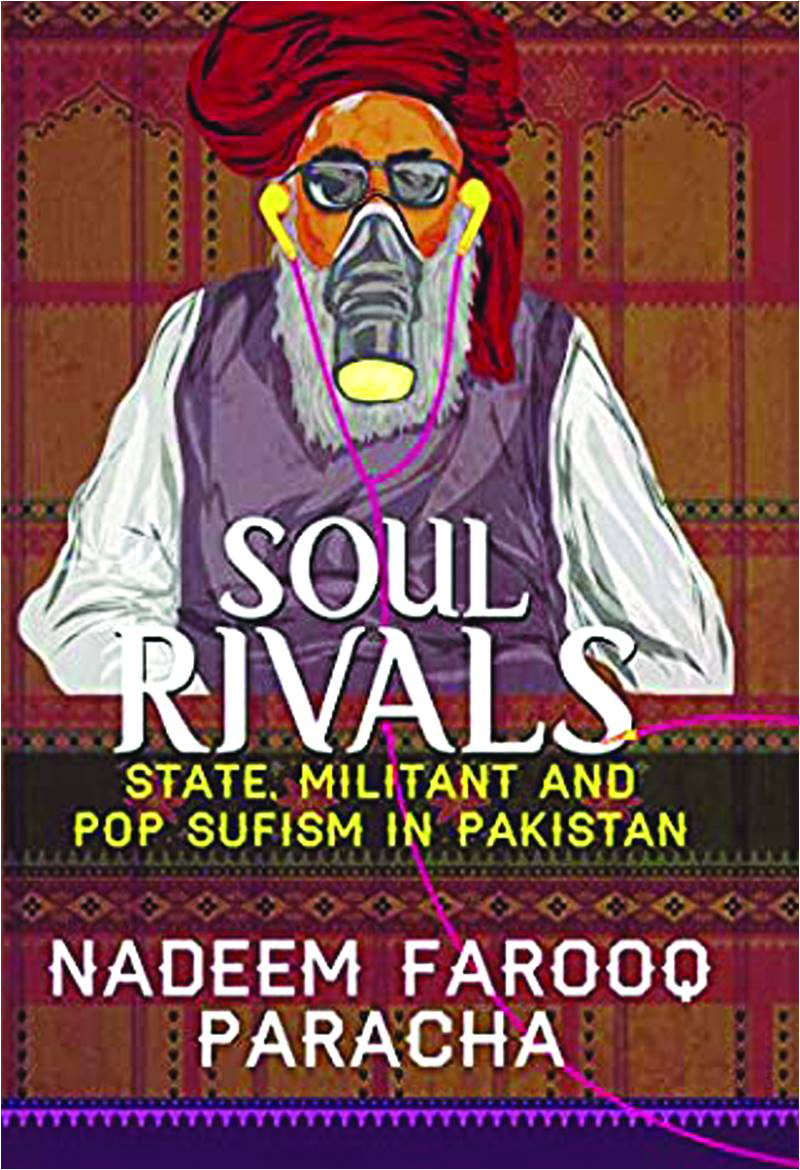
These were then taken to Europe, mostly by European writers who presented them as enigmatic, elusive, and, that word again, exotic entities. So it were the more exotic strands of Sufism which first landed in the imaginations of the Europeans.
But as we have seen, over the last many decades, Hinduism, Buddhism and even Sufism that were imported from Asia to the West, gradually mutated to fit the equally evolving tastes in this context of Europeans and Americans. That’s why if one describes a man like Khadim Hussain Rizvi as a follower of Sufism to a western patron of Sufism, he or she will be left feeling baffled.
RHR: You have pointed out that the narrative around Sufism, or rather Barelvism, has constantly been rewritten by different regimes. For example, during Ayub Khan’s regime, you wrote Sufis were projected as “forward looking”, whereas the Bhutto regime characterized them as “fighters against oppressors”. Likewise, you then add that the Zia regime portrayed them as “Islamic Scholars”. Why do you think that regimes find it so important to weave a narrative around Sufism? Further, why do you think that Sufism is open to so many kinds of reinterpretations?
NFP: As I mentioned earlier, Sufism does not really have a doctrinal core. So this makes it fluid and inherently mutable. In fact, this is a strength because such a disposition eschews dogma. Sufism has so many meanings on so many levels: religious, social and political.
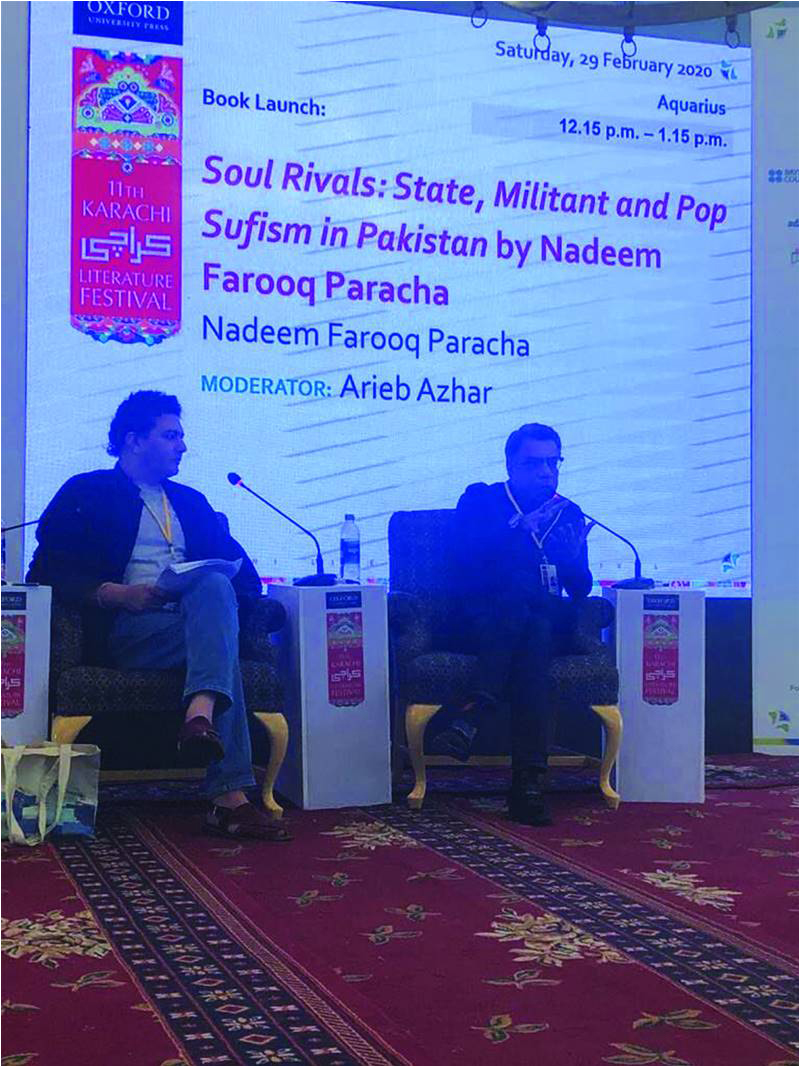
Barelvism is just one expression of Sufism. A Sufism which developed in South Asia, mainly from the 13th century onwards. Yet, we can’t say that Barelvism is an extension of South Asian Sufism’s entire body. It is, as I said, an expression of certain parts of this Sufism.
This expression, Barelvism, emerged in the late 19th century, mainly to safeguard certain populist and folk beliefs and rituals of the type of Sufism that had developed in this region and had begun to come under attack from other stands of Islam which began to emerge in the 18th and 19th centuries, mainly as reactions to the rise of European imperialism.
It is Barelvism’s folk roots and populist disposition which most excites rulers, because a majority of Pakistanis still follow this folk version of the faith. It gives the state and governments a lot of room and space to formulate a state religion that is not dogmatic or strictly doctrinal in nature. In a strange way, it also makes it easier for the state or a government to weave a modernist Islam without using the word secularism.
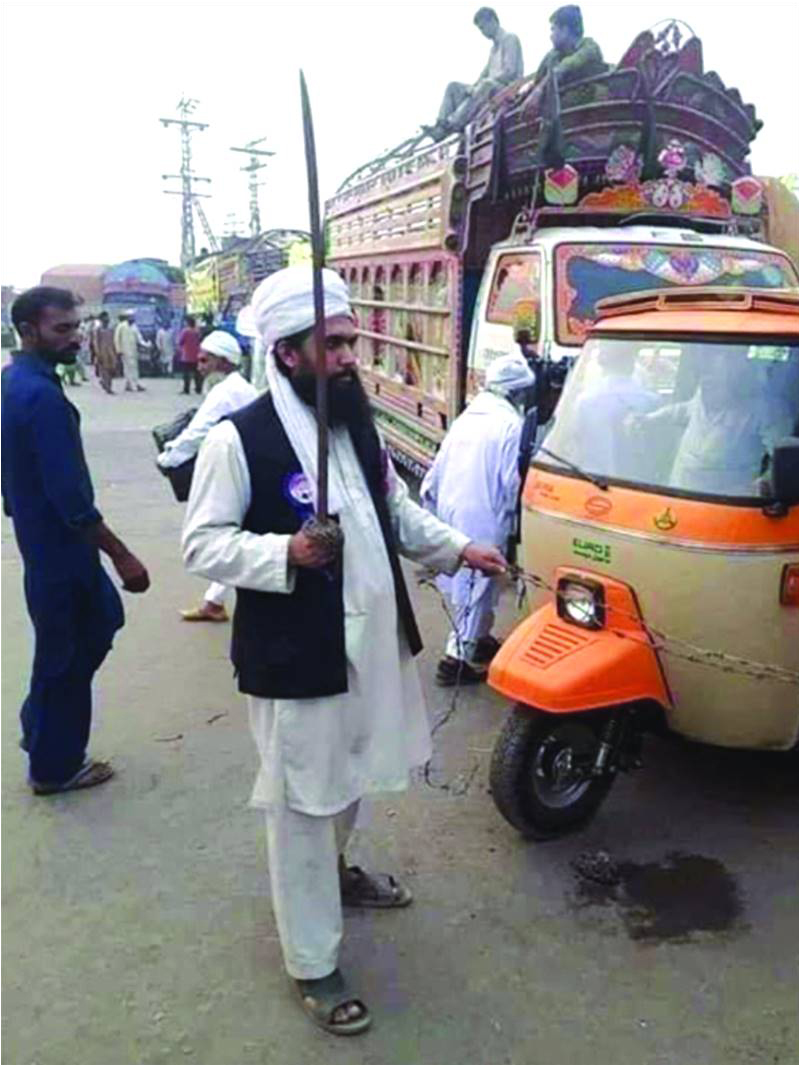
This practice flourished during the Ayub dictatorship and during the first half of the ZA Bhutto regime.
However, as we saw, things began to change rather drastically after 1979 when the Zia dictatorship issued its first set of Hudood Ordinances. It was an attempt to reroute the trajectory of Islam in Pakistan towards something more doctrinal and dogmatic.
This greatly empowered those Sunni sects that were never comfortable with Barelvism, or for that matter, with Muslim Modernism. But it also began to transform certain sections of Barelvism. These sections began to borrow rhetoric and antics of opposing sects. This was not a case of the Stockholm Syndrome, as such. Rather, just like any belief system which emerged in South Asia, Barelvism too is very good at borrowing ideas and rituals from other sects or belief systems and then wave these into their own set of ideas.
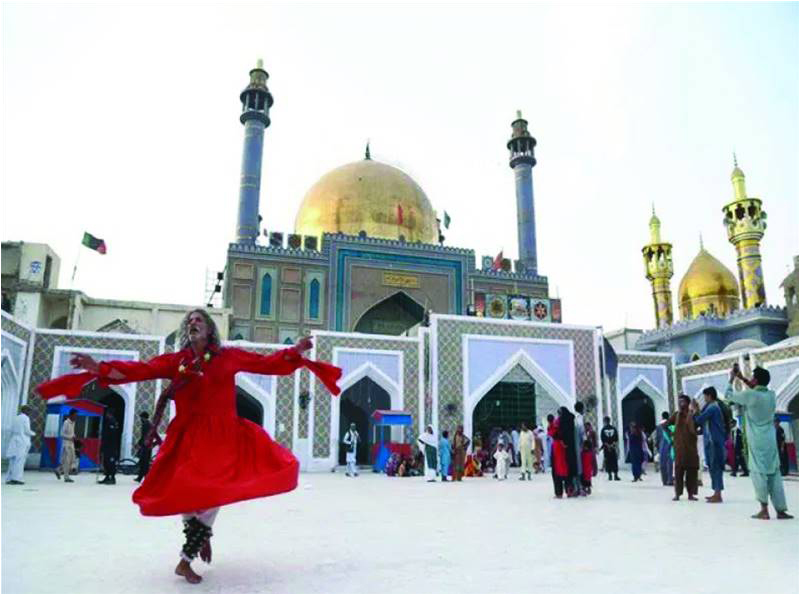
RHR: Historically, as you have mentioned, Sufism was inclusive and Hindus were frequent visitors to Shrines. Moreover, Sufism in the Indian Subcontinent was influenced by local faith traditions. Why, then, do you think that contemporary Sufism, particularly Barelvism, took an anti-Hindu turn? For example you have mentioned that Ahmad Raza Khan Barelvi (the founder of Barelvi sub-sect) was anti-Hindu.
NFP: Sufism in India was inclusive. It had to be. Here were Muslims ruling over a large non-Muslim majority. Sufism in South Asia adopted the religious ethos of the region. It was unafraid to borrow many folk or populist aspects of this ethos. That’s why it thrived as opposed to the more doctrinal or dogmatic strands of the faith.
Barelvism, however, emerged during a tense and very fluid period. There were polemical battles taking place, not only between Islam, Christianity and Hinduism, but also between various Islamic sects and strands.
On the other hand, some Hindu reformist outfits were trying to formulate a more cohesive and universal idea of Hinduism.
This soon mutated into meaning a more chauvinistic idea of Hindu nationalism. And embedded in this idea was a need to avenge the Muslim domination of India’s Hindus.
When Barelvism began to emerge in the late 19th century, it was not only reacting against Islamic sects that were opposing it, but also against the very early expressions of Hindu nationalism.
Secondly, since the political vessels of the anti-Barelvi sects were supporting the Indian National Congress, the Barelvi leadership went the other way. It saw the Congress as a Hindu party in bed with anti-Barelvi elements.
RHR: Some of the Islamic sects are pan-Islamic. For example, Deobandism and Wahabism as religious and political ideologies transcend national boundaries. However, this does not seem to be the case with Sufism. What’s your opinion about that?
NFP: Sufism is highly mutable. It tends to readily adopt the cultural context of whichever reality that it decides to settle in. But this does not mean it is any less pan-Islamic. Let me explain. As an esoteric idea, it deals more with emotions and the soul which, since they are extremely subjective and even abstract in essence, know no physical boundaries like nations or regions.
But having said that, and as I have discussed in detail in my book, there is also a prominent political dimension and history of Sufism. Some of these are as ideologically pan-Islamic as any other.
The Sufi sects in Turkey or Iran, for example, were extremely pan-Islamic. At least as political expressions. That’s why they were shut out by Turkish Republicans under Kemal Ataturk who wanted to formulate a purely boundary-bound Turkish nationalism. And he did. But the Sufi orders had to either be silenced or co-opted within these boundaries.
RHR: You have written that Barelvi Ulema and Jamiat Ulema Pakistan (JUP) had not played a prominent role in the 1953 anti-Ahmadiyya riots, but subsequently in 1970s the same took a decisive anti-Ahmadiyya turn. Right now, Barelvis are at the forefront of anti-Ahmadiyya discourse. Why do you think this shift took place?
NFP: I have explored this in some length in the book. It has a rather complex history. But I’ll try to sum it up here as simply as I can. During my research for the book, I discovered that the anti-Ahmadiyya sentiment is a purely 20th century phenomenon. The Ahmadiyya first emerged as a sect in 19th century India, during the same decades in which sects such as the Deobandi, the Ahl-e-Hadees and eventually the Barelvi were emerging. This was the period when the idea of Muslim Modernism too was being shaped.
Interestingly, according to some early literature on the Ahmadiyya that I came across, the sect was not really understood as a sect as such, but an off-shoot of the idea of Muslim Modernism.
Things began to get complicated when in the early 20th century, the Ahmadiyya community split into two factions. One of these factions claimed that the founder of the community was indeed a messiah. The literature of this faction, which I came across, was rather aggressive in addressing those who found it shocking.
The Deobandi and the Ahel-e-Hadees began to sound the alarm and declare that the Ahmadiyya were heretics. Barelvi religious leadership followed suit.
But the attacks in this respect were never violent.
Had these attacks been more serious in nature, the Ahmadiyya community would never have agreed to support Jinnah’s call for a separate Muslim-majority state.
The Ahmadiyya community found its members placed in various positions of power in the first political set-up shaped by Jinnah. However, since various religious outfits and figures were largely kept at an arms length, these groups tried to retaliate in a violent manner by becoming willing pawns of certain bickering politicians within the country’s first ruling party.
For example, the Punjab CM Mumtaz Daultana who wanted to embarrass then PM Khawaja Nazimuddin, did not hesitate to give certain Deobandi and Islamist groups a free hand to create trouble in the province through religious riots. All of a sudden the Ahmadiyya became pariahs.
While scanning newspaper editions published during the months of the riots, I came across a letter written in, I think, the Pakistan Times, by a gentleman from Karachi who asked what was the commotion about and who were the Ahmadiyya.
But after the riots were crushed by the military, I’m sure many who, like this man, had no idea, now knew.
The reason why the Barelvi religious leadership was largely missing during the 1953 anti-Ahmadiyya movement was mainly to do with two factors. Firstly, the Barelvi were not a very politically organised lot, as the Deobandi or the Islamists were.
Secondly, unlike the two, the Barelvi groups had supported Jinnah and even after Partition were still somewhat seen as being pro-ruling-party.
After remaining on the fringes of Pakistani politics, the Barelvi finally went on to find a niche of their own in the 1970s and onwards by helping reinvigorate the so-called Ahmadiyya Question and then becoming the self-appointmented gatekeepers of the country’s controversial blasphemy laws that were formed between 1982 and 1986.
RHR: In popular culture and performing arts, according to your narrative, Sufism has been associated with progressive values like anti-materialism, mysticism, tolerance and in a subtle way against organized religion. Overall, Sufism, according to you, at least in pop culture, seems to embody progressive values. However, again according to your narrative, the dominant political expression of Sufism, while less militant than Deobandis, is still regressive. Why there is such a divergence?
NFP: I don’t think I have used the word progressive in this context. Instead, in the book, I have demonstrated how Sufism was utilised by the progressive-minded lot to shape a modernist narrative without using any overt use of terms such as secularism.
This tactic continued and continues within the country’s pop culture but the protagonists are not necessarily progressive. Secondly, one must be careful in the manner in which Barelvism is to be associated with Sufism. As I mentioned earlier, Barelvism is an extension of certain aspects of South Asian Sufism and not of its entire body.
Within Sufism are certain orders that are still extremely inclusive and progressive, and there are orders that are extremely conservative. Same goes for the Barelvi. Barelvism does not have a core doctrine. Its rituals and beliefs shift from region to region, ethnicity to ethnicity. That’s why there are degrees of difference between, say, the Mohajir Barelvi of Karachi, and the Sindhi Barelvi or the Barelvi of Punjab. A radical Barelvi Party such as Khadim Hussain Rizvi’s TLP managed to bag quite a number of votes in Karachi and Punjab, but only a handful in the interior of Sindh.
RHR: Finally, considering the fact that majority of Pakistanis are Barelvis, and right now issues raised by Barelvi outfits resonate with them, do you foresee a future success for Barelvi political parties?
NFP: No, I don’t. Religious parties have never been successful without being aided by the state, especially from 1977 onwards. But as we have seen, the need for the state to aid them is eroding. My interactions and exchanges with some people who are directly involved in forming the state’s or the establishment’s narrative in this context, suggests that they want to quietly undo this process.
So far, they are not sure how, though, or without triggering the wrath of those they aided.
They tried to create a middle-ground by upgrading the status of a party such as the PTI which, they believed, could appeal to the modernists as well as the more religious sections. This did not work, because issues in this context can not be addressed through mere rhetoric. And anyway, I believe it was an unwise experiment.
PTI just doesn’t have the mind nor the will to help the state to formulate a new contract between modernity and religious conservatism in Pakistan. But having said that, I am convinced, that as we go forward, the state will not be aiding religious groups anymore. The religious parties are going to be on their own, like they were before 1977.
Nadeem Farooq Paracha: First of all, Sufism is not a sect itself. I make that perfectly clear in my book. Fact is, there is no one kind of Sufism. However, in more general terms or in a nutshell, it has often been described as the esoteric strand of Islam. This is not to suggest that it isn’t. But even as an esoteric concept, it has numerous variations.
There is no single, core nature of Sufism, as such. When the West came into contact with the East, especially when European imperialism was ascending,its imperial vessels were rather amused by, let’s say, the more exotic traits and customs of so-called eastern cultures.
Especially those that seemed syncretic in nature. These included various forms of Hinduism, Buddhism and Sufism.

These were then taken to Europe, mostly by European writers who presented them as enigmatic, elusive, and, that word again, exotic entities. So it were the more exotic strands of Sufism which first landed in the imaginations of the Europeans.
But as we have seen, over the last many decades, Hinduism, Buddhism and even Sufism that were imported from Asia to the West, gradually mutated to fit the equally evolving tastes in this context of Europeans and Americans. That’s why if one describes a man like Khadim Hussain Rizvi as a follower of Sufism to a western patron of Sufism, he or she will be left feeling baffled.
RHR: You have pointed out that the narrative around Sufism, or rather Barelvism, has constantly been rewritten by different regimes. For example, during Ayub Khan’s regime, you wrote Sufis were projected as “forward looking”, whereas the Bhutto regime characterized them as “fighters against oppressors”. Likewise, you then add that the Zia regime portrayed them as “Islamic Scholars”. Why do you think that regimes find it so important to weave a narrative around Sufism? Further, why do you think that Sufism is open to so many kinds of reinterpretations?
NFP: As I mentioned earlier, Sufism does not really have a doctrinal core. So this makes it fluid and inherently mutable. In fact, this is a strength because such a disposition eschews dogma. Sufism has so many meanings on so many levels: religious, social and political.

“It is Barelvism’s folk roots and populist disposition which most excites rulers, because a majority of Pakistanis still follow this folk version of the faith. It gives the state and governments a lot of room and space to formulate a state religion that is not dogmatic or strictly doctrinal in nature”
Barelvism is just one expression of Sufism. A Sufism which developed in South Asia, mainly from the 13th century onwards. Yet, we can’t say that Barelvism is an extension of South Asian Sufism’s entire body. It is, as I said, an expression of certain parts of this Sufism.
This expression, Barelvism, emerged in the late 19th century, mainly to safeguard certain populist and folk beliefs and rituals of the type of Sufism that had developed in this region and had begun to come under attack from other stands of Islam which began to emerge in the 18th and 19th centuries, mainly as reactions to the rise of European imperialism.
It is Barelvism’s folk roots and populist disposition which most excites rulers, because a majority of Pakistanis still follow this folk version of the faith. It gives the state and governments a lot of room and space to formulate a state religion that is not dogmatic or strictly doctrinal in nature. In a strange way, it also makes it easier for the state or a government to weave a modernist Islam without using the word secularism.

This practice flourished during the Ayub dictatorship and during the first half of the ZA Bhutto regime.
However, as we saw, things began to change rather drastically after 1979 when the Zia dictatorship issued its first set of Hudood Ordinances. It was an attempt to reroute the trajectory of Islam in Pakistan towards something more doctrinal and dogmatic.
This greatly empowered those Sunni sects that were never comfortable with Barelvism, or for that matter, with Muslim Modernism. But it also began to transform certain sections of Barelvism. These sections began to borrow rhetoric and antics of opposing sects. This was not a case of the Stockholm Syndrome, as such. Rather, just like any belief system which emerged in South Asia, Barelvism too is very good at borrowing ideas and rituals from other sects or belief systems and then wave these into their own set of ideas.

RHR: Historically, as you have mentioned, Sufism was inclusive and Hindus were frequent visitors to Shrines. Moreover, Sufism in the Indian Subcontinent was influenced by local faith traditions. Why, then, do you think that contemporary Sufism, particularly Barelvism, took an anti-Hindu turn? For example you have mentioned that Ahmad Raza Khan Barelvi (the founder of Barelvi sub-sect) was anti-Hindu.
NFP: Sufism in India was inclusive. It had to be. Here were Muslims ruling over a large non-Muslim majority. Sufism in South Asia adopted the religious ethos of the region. It was unafraid to borrow many folk or populist aspects of this ethos. That’s why it thrived as opposed to the more doctrinal or dogmatic strands of the faith.
Barelvism, however, emerged during a tense and very fluid period. There were polemical battles taking place, not only between Islam, Christianity and Hinduism, but also between various Islamic sects and strands.
On the other hand, some Hindu reformist outfits were trying to formulate a more cohesive and universal idea of Hinduism.
This soon mutated into meaning a more chauvinistic idea of Hindu nationalism. And embedded in this idea was a need to avenge the Muslim domination of India’s Hindus.
When Barelvism began to emerge in the late 19th century, it was not only reacting against Islamic sects that were opposing it, but also against the very early expressions of Hindu nationalism.
Secondly, since the political vessels of the anti-Barelvi sects were supporting the Indian National Congress, the Barelvi leadership went the other way. It saw the Congress as a Hindu party in bed with anti-Barelvi elements.
RHR: Some of the Islamic sects are pan-Islamic. For example, Deobandism and Wahabism as religious and political ideologies transcend national boundaries. However, this does not seem to be the case with Sufism. What’s your opinion about that?
NFP: Sufism is highly mutable. It tends to readily adopt the cultural context of whichever reality that it decides to settle in. But this does not mean it is any less pan-Islamic. Let me explain. As an esoteric idea, it deals more with emotions and the soul which, since they are extremely subjective and even abstract in essence, know no physical boundaries like nations or regions.
But having said that, and as I have discussed in detail in my book, there is also a prominent political dimension and history of Sufism. Some of these are as ideologically pan-Islamic as any other.
The Sufi sects in Turkey or Iran, for example, were extremely pan-Islamic. At least as political expressions. That’s why they were shut out by Turkish Republicans under Kemal Ataturk who wanted to formulate a purely boundary-bound Turkish nationalism. And he did. But the Sufi orders had to either be silenced or co-opted within these boundaries.
RHR: You have written that Barelvi Ulema and Jamiat Ulema Pakistan (JUP) had not played a prominent role in the 1953 anti-Ahmadiyya riots, but subsequently in 1970s the same took a decisive anti-Ahmadiyya turn. Right now, Barelvis are at the forefront of anti-Ahmadiyya discourse. Why do you think this shift took place?
NFP: I have explored this in some length in the book. It has a rather complex history. But I’ll try to sum it up here as simply as I can. During my research for the book, I discovered that the anti-Ahmadiyya sentiment is a purely 20th century phenomenon. The Ahmadiyya first emerged as a sect in 19th century India, during the same decades in which sects such as the Deobandi, the Ahl-e-Hadees and eventually the Barelvi were emerging. This was the period when the idea of Muslim Modernism too was being shaped.
Interestingly, according to some early literature on the Ahmadiyya that I came across, the sect was not really understood as a sect as such, but an off-shoot of the idea of Muslim Modernism.
Things began to get complicated when in the early 20th century, the Ahmadiyya community split into two factions. One of these factions claimed that the founder of the community was indeed a messiah. The literature of this faction, which I came across, was rather aggressive in addressing those who found it shocking.
The Deobandi and the Ahel-e-Hadees began to sound the alarm and declare that the Ahmadiyya were heretics. Barelvi religious leadership followed suit.
But the attacks in this respect were never violent.
Had these attacks been more serious in nature, the Ahmadiyya community would never have agreed to support Jinnah’s call for a separate Muslim-majority state.
The Ahmadiyya community found its members placed in various positions of power in the first political set-up shaped by Jinnah. However, since various religious outfits and figures were largely kept at an arms length, these groups tried to retaliate in a violent manner by becoming willing pawns of certain bickering politicians within the country’s first ruling party.
For example, the Punjab CM Mumtaz Daultana who wanted to embarrass then PM Khawaja Nazimuddin, did not hesitate to give certain Deobandi and Islamist groups a free hand to create trouble in the province through religious riots. All of a sudden the Ahmadiyya became pariahs.
While scanning newspaper editions published during the months of the riots, I came across a letter written in, I think, the Pakistan Times, by a gentleman from Karachi who asked what was the commotion about and who were the Ahmadiyya.
But after the riots were crushed by the military, I’m sure many who, like this man, had no idea, now knew.
The reason why the Barelvi religious leadership was largely missing during the 1953 anti-Ahmadiyya movement was mainly to do with two factors. Firstly, the Barelvi were not a very politically organised lot, as the Deobandi or the Islamists were.
Secondly, unlike the two, the Barelvi groups had supported Jinnah and even after Partition were still somewhat seen as being pro-ruling-party.
After remaining on the fringes of Pakistani politics, the Barelvi finally went on to find a niche of their own in the 1970s and onwards by helping reinvigorate the so-called Ahmadiyya Question and then becoming the self-appointmented gatekeepers of the country’s controversial blasphemy laws that were formed between 1982 and 1986.
RHR: In popular culture and performing arts, according to your narrative, Sufism has been associated with progressive values like anti-materialism, mysticism, tolerance and in a subtle way against organized religion. Overall, Sufism, according to you, at least in pop culture, seems to embody progressive values. However, again according to your narrative, the dominant political expression of Sufism, while less militant than Deobandis, is still regressive. Why there is such a divergence?
NFP: I don’t think I have used the word progressive in this context. Instead, in the book, I have demonstrated how Sufism was utilised by the progressive-minded lot to shape a modernist narrative without using any overt use of terms such as secularism.
This tactic continued and continues within the country’s pop culture but the protagonists are not necessarily progressive. Secondly, one must be careful in the manner in which Barelvism is to be associated with Sufism. As I mentioned earlier, Barelvism is an extension of certain aspects of South Asian Sufism and not of its entire body.
Within Sufism are certain orders that are still extremely inclusive and progressive, and there are orders that are extremely conservative. Same goes for the Barelvi. Barelvism does not have a core doctrine. Its rituals and beliefs shift from region to region, ethnicity to ethnicity. That’s why there are degrees of difference between, say, the Mohajir Barelvi of Karachi, and the Sindhi Barelvi or the Barelvi of Punjab. A radical Barelvi Party such as Khadim Hussain Rizvi’s TLP managed to bag quite a number of votes in Karachi and Punjab, but only a handful in the interior of Sindh.
RHR: Finally, considering the fact that majority of Pakistanis are Barelvis, and right now issues raised by Barelvi outfits resonate with them, do you foresee a future success for Barelvi political parties?
NFP: No, I don’t. Religious parties have never been successful without being aided by the state, especially from 1977 onwards. But as we have seen, the need for the state to aid them is eroding. My interactions and exchanges with some people who are directly involved in forming the state’s or the establishment’s narrative in this context, suggests that they want to quietly undo this process.
So far, they are not sure how, though, or without triggering the wrath of those they aided.
They tried to create a middle-ground by upgrading the status of a party such as the PTI which, they believed, could appeal to the modernists as well as the more religious sections. This did not work, because issues in this context can not be addressed through mere rhetoric. And anyway, I believe it was an unwise experiment.
PTI just doesn’t have the mind nor the will to help the state to formulate a new contract between modernity and religious conservatism in Pakistan. But having said that, I am convinced, that as we go forward, the state will not be aiding religious groups anymore. The religious parties are going to be on their own, like they were before 1977.

